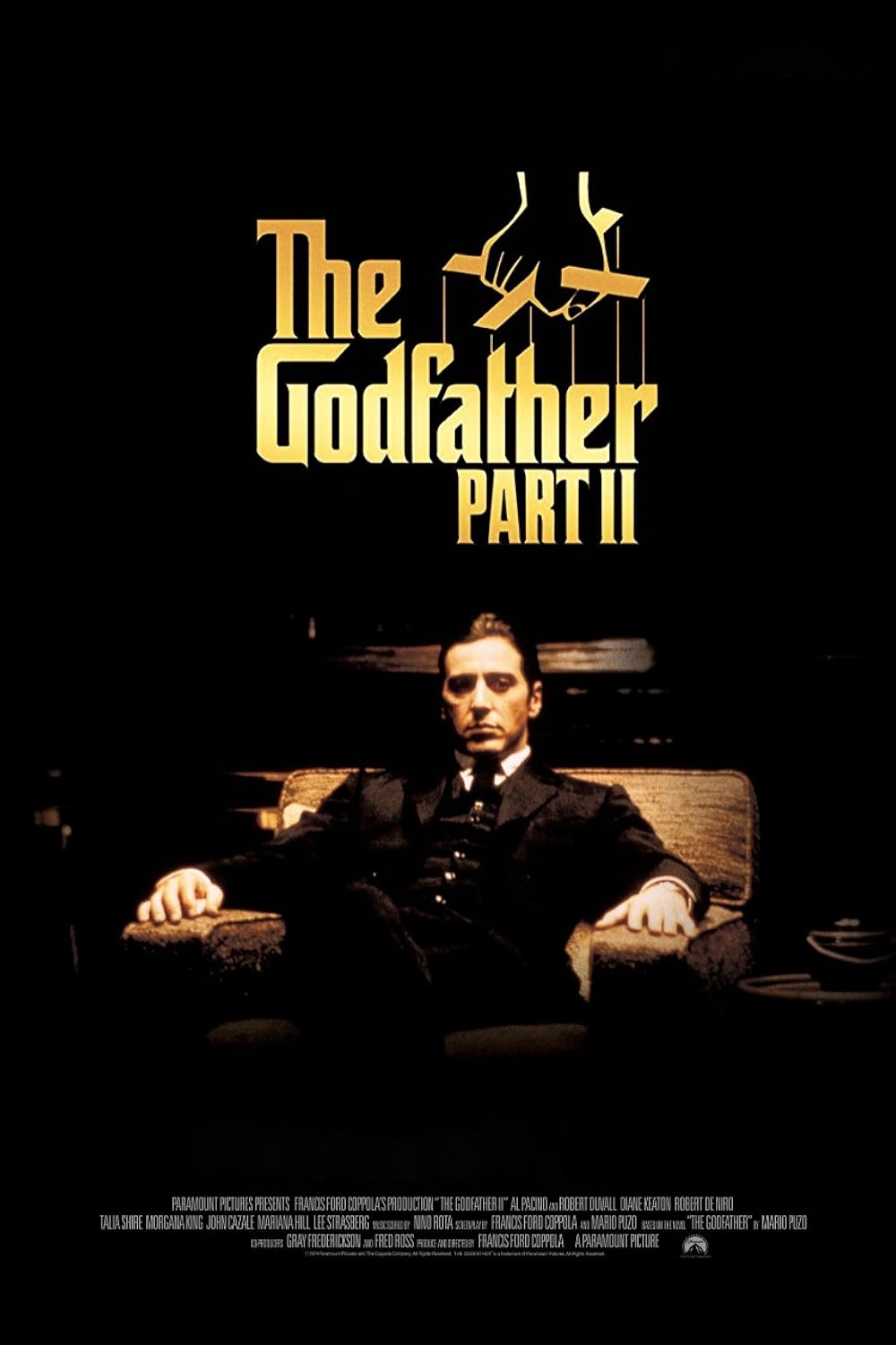


The Godfather Part II achieved what many considered impossible when it premiered on December 20, 1974—creating a sequel that rivals and possibly surpasses its legendary predecessor. This 3-hour and 22-minute crime/drama epic holds an exceptional 9.0/10 IMDb rating from over 1.5 million votes, establishing itself as one of cinema's rare sequels to match the original's brilliance.
Francis Ford Coppola's ambitious dual narrative structure tells two parallel stories across different generations, with Al Pacino's Michael Corleone descending into darkness while Robert De Niro's young Vito Corleone rises from poverty to power. Watch The Godfather Part 2 to experience the film that proved sequels could expand upon their source material while maintaining artistic integrity.
The Godfather Part II cast delivers performances that defined careers and created new benchmarks for acting excellence. Al Pacino transforms Michael Corleone from reluctant heir to cold patriarch, showing the moral erosion that power inflicts across the film's substantial 202-minute runtime. His nuanced portrayal earned an Academy Award nomination and remains one of cinema's greatest character studies.
Robert De Niro won the Academy Award for Best Supporting Actor portraying young Vito Corleone, becoming the first actor to win an Oscar for playing a character previously portrayed by another Oscar winner (Marlon Brando). De Niro learned to speak Sicilian for the role, bringing authenticity to Vito's immigrant journey from Sicily to New York's Little Italy.
The ensemble supporting cast of The Godfather Part 2 includes John Cazale's tragic Fredo, whose betrayal provides the film's emotional devastation. Lee Strasberg's Hyman Roth delivers chilling menace as Michael's calculating adversary, while Diane Keaton's Kay Adams confronts Michael's lies with devastating clarity. Talia Shire returns as Connie, transforming from victim to enabler of the family's criminal enterprise.
The Godfather Part 2 film revolutionized sequel storytelling through its innovative parallel narrative structure. Coppola intercuts between Michael's 1958-1959 consolidation of power and Vito's 1917-1925 rise from Sicilian immigrant to New York crime lord. This ambitious approach allows the 202-minute runtime to explore how power corrupts across generations.
The young Vito Corleone storyline, set against the backdrop of early 20th century New York, shows how immigrant communities turned to organized crime for protection and opportunity. Robert De Niro's performance reveals Vito as both ruthless and honorable, building power through loyalty and strategic violence while maintaining family bonds.
Michael Corleone's storyline exposes the isolation that comes with absolute power. As Michael expands the family business to Nevada and Cuba, he systematically destroys his personal relationships, culminating in ordering his brother Fredo's execution—the ultimate betrayal of the family values Vito held sacred.
The Godfather sequel demonstrates Coppola's growth as a filmmaker, tackling a more complex narrative structure with assured confidence. The director's decision to expand Mario Puzo's novel beyond the first film's scope created a meditation on the American Dream's corruption across two generations.
Gordon Willis's cinematography maintains the first film's signature darkness while using warmer tones for Vito's storyline, visually distinguishing the timelines. The contrast between 1920s Sicily's sunlit poverty and 1950s Lake Tahoe's cold opulence reinforces the narrative's thematic explorations throughout the substantial runtime.
Nino Rota's musical score incorporates the original's iconic themes while introducing new motifs for the expanded narrative. The Sicilian tarantella that accompanies young Vito's scenes creates nostalgic warmth, contrasting sharply with the sparse, ominous music underscoring Michael's descent into moral darkness.
The film's technical achievements within the crime/drama category earned widespread recognition. The period reconstruction of early 1900s New York and 1950s Cuba required meticulous attention to historical detail, creating authentic environments that ground the epic narrative in tangible reality.
Movie Details:
The Godfather Part II explores themes of power's corrupting influence, the immigrant experience, and the American Dream's dark underbelly throughout its 202-minute narrative. The parallel stories demonstrate how Vito built empire through community bonds while Michael destroys everything through paranoid isolation.
The film's examination of assimilation and identity resonates beyond its Italian-American setting. Vito's journey from powerless immigrant to community protector shows both organized crime's appeal to marginalized populations and its moral costs. Michael's transformation into the very American businessman his father scorned illustrates how successive generations lose connection to foundational values.
Furthermore, the movie's exploration of family versus business reaches tragic conclusions. Michael's decision to have Fredo killed represents the ultimate victory of business over family, inverting everything Vito built. The final shot of young Vito holding infant Michael provides devastating irony—the father who sacrificed for his family unwittingly created the son who would destroy it.
The Godfather Part 2 film achieved unprecedented critical and commercial success for a sequel. The movie won six Academy Awards, including Best Picture, making it the first sequel to win the top Oscar. Coppola won Best Director, while De Niro's Supporting Actor win and the film's technical awards cemented its status as a masterpiece.
Critics initially debated whether the sequel surpassed the original, a discussion that continues today. Many scholars consider the films inseparable, arguing they form a single epic examining American capitalism through organized crime's lens. The parallel storytelling influenced countless subsequent films attempting similar ambitious narrative structures.
Where to watch The Godfather Part 2 options now include numerous streaming platforms offering high-definition viewing quality worthy of this cinematic achievement. The film's epic 202-minute runtime benefits from uninterrupted streaming that preserves Coppola's carefully constructed parallel narratives and thematic resonance.
Premium IPTV services provide superior quality for experiencing this masterwork. The enhanced viewing experience includes optional commentary tracks featuring Coppola discussing the film's production challenges and narrative innovations throughout the substantial runtime.
Available Viewing Formats:
The Godfather Part II serves as the centerpiece of Coppola's trilogy, expanding the first film's narrative while setting up the third installment's themes. Together with The Godfather (1972) and The Godfather Part III (1990), the films create over nine hours of storytelling that traces the Corleone family across seven decades.
The Godfather Part III, released sixteen years later, continues Michael's story into old age as he seeks redemption for his crimes. While less critically acclaimed than the first two films, Coppola's 2020 re-edit, The Godfather Coda: The Death of Michael Corleone, improved the finale's reception by restructuring the narrative and providing a more fitting conclusion to the epic saga.
The Godfather Part 2 cast assembly required finding an actor capable of portraying young Vito Corleone without simply imitating Marlon Brando. Robert De Niro studied Brando's mannerisms while creating his own interpretation, incorporating Sicilian dialect and physicality that suggested the character Brando would become.
The decision to structure the film with parallel timelines came from Coppola's desire to adapt unused material from Puzo's novel while continuing Michael's story. This ambitious approach required meticulous editing to maintain coherence across the 202-minute runtime, with both narratives building toward simultaneous emotional climaxes.
The production faced significant challenges, including recreating early 1900s New York and 1950s Cuba within budget constraints. The crew transformed contemporary locations into period-accurate settings, with the Dominican Republic standing in for revolutionary Cuba after the Castro government denied filming permission.
The Sicilian sequences required authentic locations and local actors to capture the immigrant experience's origins. De Niro's commitment to learning Sicilian dialect added authenticity that elevated these scenes beyond typical Hollywood period reconstruction.
The film's opening communion party establishes Michael's power through visual parallel to Vito's wedding in the original film. However, where Vito's celebration showed community warmth, Michael's party reveals cold formality—even his mother sits separated, symbolizing the family's emotional dissolution throughout the 202-minute narrative.
The Senate hearing sequence demonstrates Michael's tactical brilliance and moral bankruptcy. His manipulation of Pentangeli's testimony shows how completely he's embraced his father's methods while abandoning Vito's principles, using family bonds as weapons rather than sources of strength.
The Cuban revolution subplot provides historical context for Michael's business expansion while foreshadowing his empire's vulnerability. Michael's realization that the rebels' willingness to die signals Batista's inevitable fall demonstrates his strategic intelligence, yet his inability to recognize similar rot in his own organization reveals fatal blindness.
The New Year's Eve Havana sequence masterfully intercuts celebration with revolution, Michael's business dealings with Fredo's betrayal, and personal ambition with political upheaval. This complex montage showcases Coppola's directorial sophistication across the substantial runtime.
The film's devastating conclusion intercuts Vito's triumphant return to Sicily to kill Don Ciccio with Michael's systematic elimination of enemies. The parallel editing emphasizes how Michael has surpassed even his father's ruthlessness—Vito killed for family survival, while Michael kills family for business survival.
The final scene of Michael alone at Lake Tahoe, having lost wife, brother, and moral center, provides one of cinema's bleakest endings. The flashback to happier times, showing the family before corruption, offers no comfort—only reminder of what Michael destroyed to maintain power.
Robert De Niro young Vito Corleone performance represents one of cinema's greatest character portrayals. The actor's preparation included studying Marlon Brando's performance, learning Sicilian, and developing physical mannerisms suggesting the character's future evolution. De Niro created a fully realized human being rather than a younger version of Brando's icon.
The virtually dialogue-free sequence of young Vito returning to Sicily to kill Don Ciccio demonstrates De Niro's ability to convey complex emotions through minimal means. The scene's power derives from the actor's subtle expression of satisfaction, justice, and residual trauma as he completes the revenge driving his entire American journey.
Al Pacino Michael Corleone transformation throughout the 202-minute runtime shows an actor at peak creative power. Pacino charts Michael's emotional death through increasingly dead eyes and mechanical movements, becoming the "monster" Kay accuses him of being while maintaining enough humanity for the performance to remain devastating rather than simply villainous.
The scene where Michael strikes Kay after she reveals aborting his son represents Michael's complete moral collapse. Pacino's explosion of violence from his character's usual controlled demeanor shocks precisely because it reveals the rage Michael suppresses to maintain his calculated exterior.
The Godfather Part II established the sequel as a legitimate art form capable of expanding rather than simply repeating the original's formula. The film proved that sequels could explore new narrative territory, develop characters beyond their initial presentation, and achieve critical acclaim equal to groundbreaking first installments.
Furthermore, film scholars study the movie's parallel narrative structure as a masterclass in complex storytelling. The technique of contrasting past and present to illuminate character development influenced countless subsequent films across various genres attempting similar thematic depth.
The film's six Academy Award wins from eleven nominations included historic achievements. Coppola became the third director to win Best Picture and Best Director for two consecutive films (both Godfather movies). De Niro's Oscar for playing a character previously portrayed by an Oscar winner (Brando) created unique Academy Awards history.
The Godfather Part 2 consistently appears on "greatest films" lists, with many critics placing it alongside or above the original. The American Film Institute ranked it #32 on its 100 Greatest American Films list, one of only two sequels in the top 100 (alongside The Godfather at #2).
The Godfather Part II transcends its crime/drama category and sequel status to become essential cinema that rewards multiple viewings across its epic 202-minute runtime. The film's examination of power, family, and the American Dream's corruption remains relevant to contemporary audiences while showcasing filmmaking excellence that established new standards for ambitious storytelling.
Whether experiencing this masterpiece for the first time or revisiting its tragic beauty, watch The Godfather Part 2 streaming through premium IPTV services ensures optimal viewing quality that honors Coppola's artistic vision and the extraordinary performances that define this cultural landmark.
The Godfather Part II stands as proof that sequels can achieve artistic legitimacy, creating lasting impact through innovative narrative structure, thematic depth, and performances that rank among cinema's finest. This masterwork continues inspiring filmmakers while providing audiences with one of the most compelling examinations of power's corrupting influence ever committed to film.
(for customer service and support)
(for new customers)